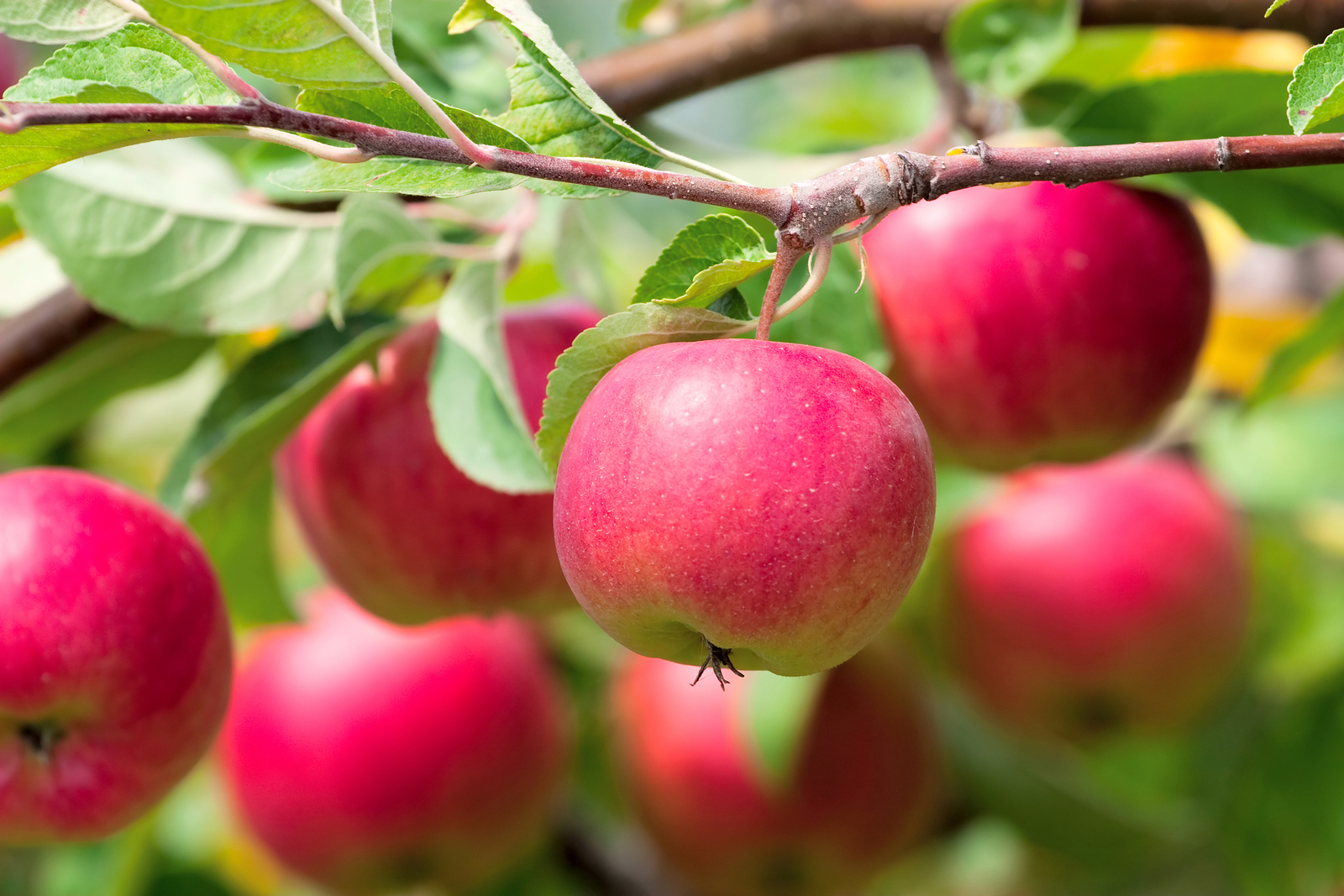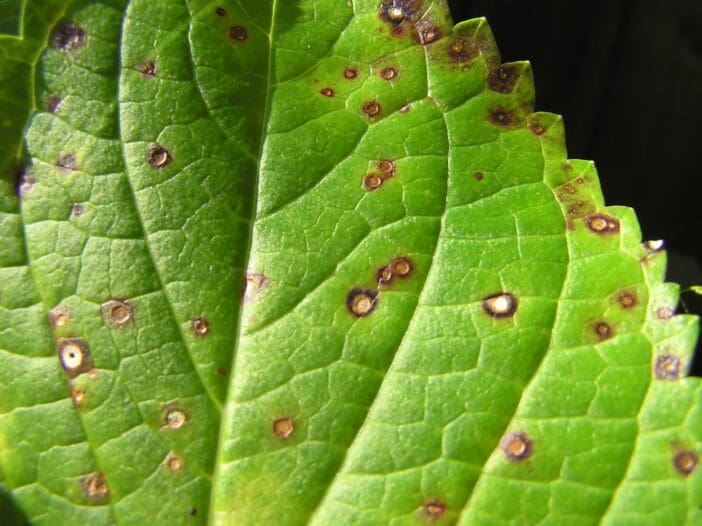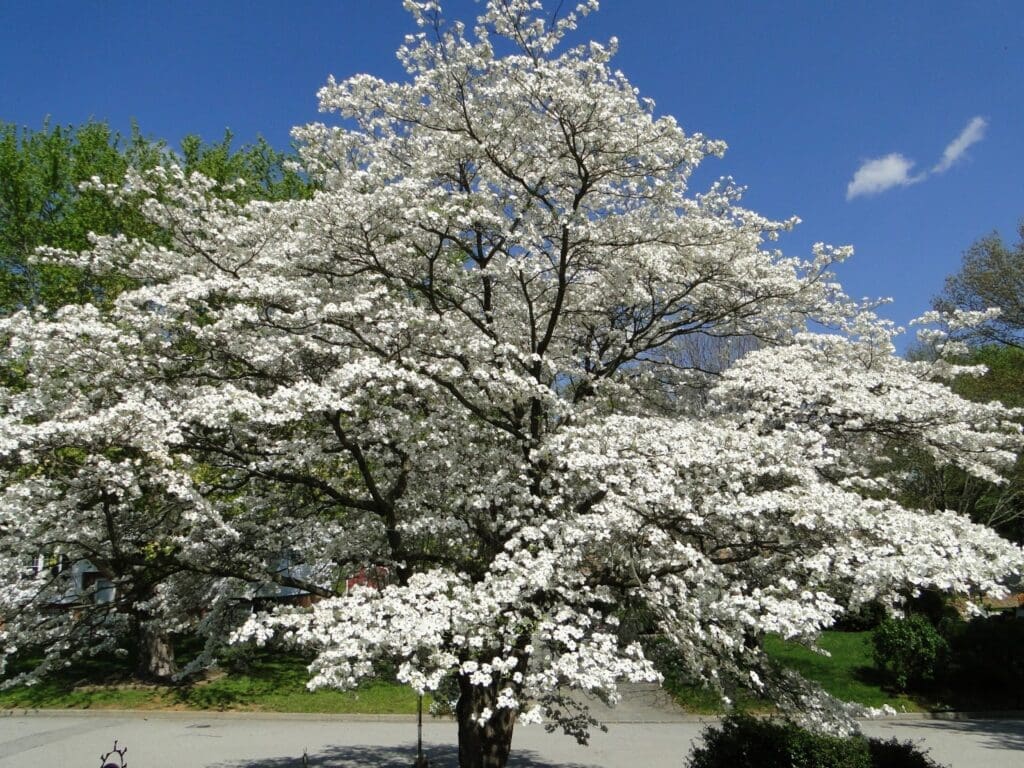Is the tree in your yard not growing leaves this spring? If you’re concerned, you’re not alone.
People often ask, “Why aren’t my trees getting any leaves?” or “Is something wrong with my tree?” or “Do I need a Certified Arborist to come look at it?”
We will talk about two reasons a tree might not have leaves in the spring and how to tell if you need to call the best tree doctor near you.
Apple trees that fail to leaf out in spring are distressing but solvable. Determining the cause and correcting problems help get your tree back on track. Read on for tips on diagnosing and addressing an apple tree with no leaves.
Why Apple Trees Need Leaves
Leaves play a critical role in a tree’s growth and fruit production. Through the process of photosynthesis leaves convert sunlight into energy to fuel new growth. Leaves also take in carbon dioxide and release oxygen. Additionally, apple fruit quality depends on adequate foliage to support developing apples.
When an apple tree doesn’t leaf out, it cannot photosynthesize or support fruit. Diagnosing the problem is key so corrective care can be taken.
Main Reasons an Apple Tree Has No Leaves
There are several potential causes for lack of leaves on an apple tree:
-
Winter damage – Extreme cold, fast temperature drops, or freeze-thaw cycles can damage buds and wood.
-
Pest or disease problems – Serious infestations compromise vascular tissues or kill off new growth.
-
Underwatering – Insufficient water prevents the tree from supporting new leaf growth.
-
Overwatering – Excess moisture causes root rot and limits nutrient uptake.
-
Improper planting – Planting too deep buries the graft union and slowly kills the tree.
-
Poor soil quality – Inadequate nutrition from depleted or compacted soil restricts foliar growth.
-
Incorrect pruning – Overzealous pruning removes too much older wood bearing fruit buds and energy reserves.
-
Root damage – Girdling, restricted, or diseased roots cannot take up nutrients needed for leaf production.
-
Variety characteristics – Some apple cultivars are late leafers or have biennial fruiting habits.
Pinpointing the specific problem is key so you can take appropriate restorative measures.
Signs Your Apple Tree is Still Alive
Before investigating causes, check if the tree is alive. Look for:
-
Supple wood – Live branches bend before breaking versus snapping when dead.
-
Plump buds – Shriveled, loose buds indicate dieback while live buds appear full.
-
Intact bark – Peeling or cracked bark suggest dead cambium underneath versus smooth, flexible bark on live wood.
-
Green cambium – Use a knife to scrape away bark and look for bright green tissue just below, signaling live growth.
-
Leaf bud swelling – Some expansion of buds without actual leaf emergence signifies life and hope for foliar recovery.
Evaluating Insect Pests, Diseases, and Animal Damage
Take time to thoroughly check for signs of living pests, evidence of past infestations, diseases, and animal damage. Look for:
-
Tunnels in branches or trunk – Bark beetles, borers, and caterpillars chew these passages.
-
Sawdust or frass around base – Indicators of boring pests like flatheaded apple tree borer attacker.
-
Web masses – Tent caterpillars and fall webworms spin conspicuous nests on branches, damaging developing shoots.
-
Woodpecker holes – Damaged areas that attract insect pests then draw woodpeckers to feed.
-
Cankers or sunken lesions on bark – Potential disease entry points.
-
Fungal fruiting structures – Mushroom-like growths signaling disease like armillaria root rot.
-
Rotting roots or collar – Caused by phytophthora crown/root rot fungus.
-
Gum spots – Exuded sap reacting to borer damage.
-
Gnaw marks on trunk – Damage from voles, rabbits, deer, or other wildlife that girdles trunks.
Addressing substantial pest and disease damage is crucial for restoring tree vigor and enabling leaf growth.
Diagnosing Environmental Factors Restricting Growth
Assuming biotic factors like pests and diseases are not at play, consider environmental influences limiting growth:
-
Test drainage – Dig down to check if soil is poorly draining clay or has hardpan limiting root penetration.
-
Check irrigation habits – Over or under-watering stresses roots’ ability to take up nutrients.
-
Evaluate fertilization – Insufficient nitrogen, phosphorous, or potassium inhibits foliar growth.
-
Assess sunlight – Too much shade starves the tree of energy needed for photosynthesis.
-
Review soil amendments – Lack of compost or other organic matter reduces nutrient availability.
-
Test soil pH – Extreme acidity or alkalinity impairs roots’ ability to take up nutrients.
-
Measure planting depth – Confirm the graft union is visible and root flare is just below soil level.
Modifying environmental conditions is key to coaxing renewed growth from a struggling apple tree.
Corrective Care for an Apple Tree With No Leaves
Once you’ve diagnosed the likely cause, provide restorative care:
-
Control pests/disease – Apply appropriate organic pesticide, fungicide, or biocontrol like beneficial nematodes.
-
Rejuvenate soil – Incorporate aged compost, humic acid, mycorrhizal fungi, and organic fertilizer to energize soil biology and fertility.
-
Improve drainage – Amend clay soils with compost; install French drains around waterlogged trees.
-
Adjust watering routine – Water deeply but infrequently, letting soil moderately dry between drinks.
-
Mulch – Apply 2-4 inches of organic mulch over roots to conserve moisture and insulate soil.
-
Check/correct planting depth – Replant too-deep trees with root flare just buried; build soil ramps around graft unions that sit too proud.
-
Prune judiciously – Remove deadwood but avoid overzealous pruning that removes too much older growth.
-
Be patient – Wait and see if late-leafing varieties or trees still establishing push new growth after taking corrective steps.
With attentive troubleshooting and care, you can get your apple tree growing again. But professional arborist evaluation is advisable for serious cases.
When to Call a Professional
If an apple tree shows no signs of life or you’re unsure of the problem, consult an arborist. Professionals have diagnostic tools and experience identifying issues. They can check for:
-
Root or trunk internal decay – Using sonic tomography and Resistance Factor meters.
-
Soil compaction – Measuring penetration resistance with penetrometers.
-
Nutrient levels – Testing soil and plant tissues to prescribe amendments.
-
Pest/disease problems – Recognizing subtle symptoms and best control approaches.
Arborists also know corrective procedures beyond the DIY realm like air spading, radial trenching, or trunk injections to rejuvenate roots or deliver nutrients directly to the vascular system.
For apple trees facing serious adversity, professional expertise offers the best hope for recovery. Don’t hesitate to call in an arborist sooner rather than later.
Preserving Tree Vigor For Reliable Leafing
While every orchard experiences setbacks, proper care keeps apple trees vigorous and resilient through challenges:
-
Choose disease-resistant varieties suited for your climate.
-
Plant at the right time and depth for your region.
-
Use preventive biofungicides and pest control measures.
-
Amend soil regularly with organic matter.
-
Prune, fertilize, and water judiciously.
-
Control weeds and grass competition.
-
Use mulch, windbreaks, shade cloth as needed.
-
Monitor for any signs of stress or damage.
-
Have arborists check overall tree health every 2-3 years.
With proactive orchard stewardship, your apple trees will continue producing beautiful foliage and bountiful fruit harvests.

Certain tree species are late bloomers
Black walnut trees don’t get leaves until late spring, so don’t expect to see them in early spring.
If you want to know why your tree isn’t growing leaves in the spring, you should first find out what kind of tree it is.
Black locust trees, crape myrtle trees, and black walnut trees take a little longer to grow leaves in the Northern Virginia, MD, and DC Metro area. Usually, these three species are slower to “wake up” than the other 80% of trees in the area.
Because the tree’s slow leafing could be due to its species, stress, or poor health, you will need to wait a few more weeks and check on it again. If your tree still isn’t putting out leaves, you should call a certified arborist because there may be a deeper problem.
Is Your Tree Not Growing Leaves?
Spring Fungal Diseases
A tree that doesn’t have enough vigor won’t be able to grow leaves or make food that is important for its health.
There are many reasons why trees don’t grow well, but in the spring, it’s often because of more fungal diseases. One of these diseases is Anthracnose, which our Certified Arborists often find in the Northern Virginia, MD, and DC Metro area.


It is important to protect your dogwood, oak, maple, or sycamore tree from anthracnose because these types of trees are more likely to get it.
Solution: Early spring is when fungal leaf diseases develop in trees. Don’t wait to do something; the disease spots on the leaves may not show up for a few weeks. Treating early, before the disease develops, is critical for the tree’s health every year.
If you want to keep your trees safe from fungal leaf disease, remember that “an ounce of prevention is worth a pound of cure.” As it turns out, the best way to keep your trees safe is to join an early treatment program. For fungal diseases, this would include a preventative fungal spray for your tree. Through expert, proactive solutions, you will protect your tree for an entire year.
5 Reasons Your Fruit Trees AREN’T GROWING [And How To FIX It]
FAQ
Why is my tree not producing leaves?
Can a tree with no leaves recover?
When should apple trees grow leaves?
Why is my apple tree not growing leaves?
If your apple tree is not growing leaves due to nutrient deficiencies, fertilization can help address the issue. However, it’s crucial to conduct a soil test to identify the specific nutrient requirements before applying fertilizers. 4. Can improper pruning prevent an apple tree from growing leaves?
Can apple trees grow new leaves if transplanted?
Here’s what I found. Apple trees won’t grow new leaves due to improper watering, sunlight, and nutrients. Transplant shock can also stunt apple trees. For best results, only water when the soil is dry, apply compost or balanced fertilizer, and provide at least 6 hours of daily sunlight. Transplanted trees can take up to 1 year to recover.
What causes apple leaves to fall off?
There are several fungal diseases that can have an impact on apples. These could include powdery mildew, oak root fungus, apple scab, and sappy bark. Examining the tree and learning to identify the fungal infections it may have can help you learn how to treat it. These infections can take hold of the tree and lead to leaves falling off.
Why do apple trees refuse to grow?
Apple trees are poor athletes. They hate competition with another plant. They want easy access to their water, nutritious soil, and sunlight. When an apple tree is well established, it might be more agreeable to sharing, but when they are young, they will downright refuse to grow if you don’t give them the space they crave.
Do apple trees lose their leaves?
That crunch of an apple you’ve picked from your own yard is like nothing else. Like many plants and trees, your apple tree is susceptible to illness and disease. It may lose all of its leaves, or it may simply stop producing leaves. Learning how to best care for your in-distress tree can help to keep it healthy for years to come.
When do apple trees leaf out?
Apple trees begin to leaf out in spring and send out blossoms shortly after. However, due to differences in climate and individual apple varieties, this can happen any time between late February and May. It’s possible that an apple tree may be slow to leaf out simply because it is a late bloomer.
- The Ultimate Guide to Growing Strawberries in Raised Beds - August 8, 2025
- No-Dig Garden Beds: The Easiest Way to Grow a Beautiful Garden - August 6, 2025
- How to Protect and Preserve Wood for Raised Garden Beds - August 6, 2025
